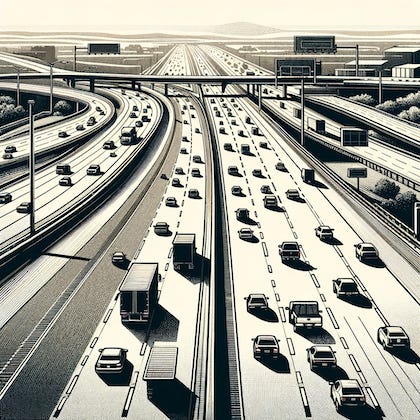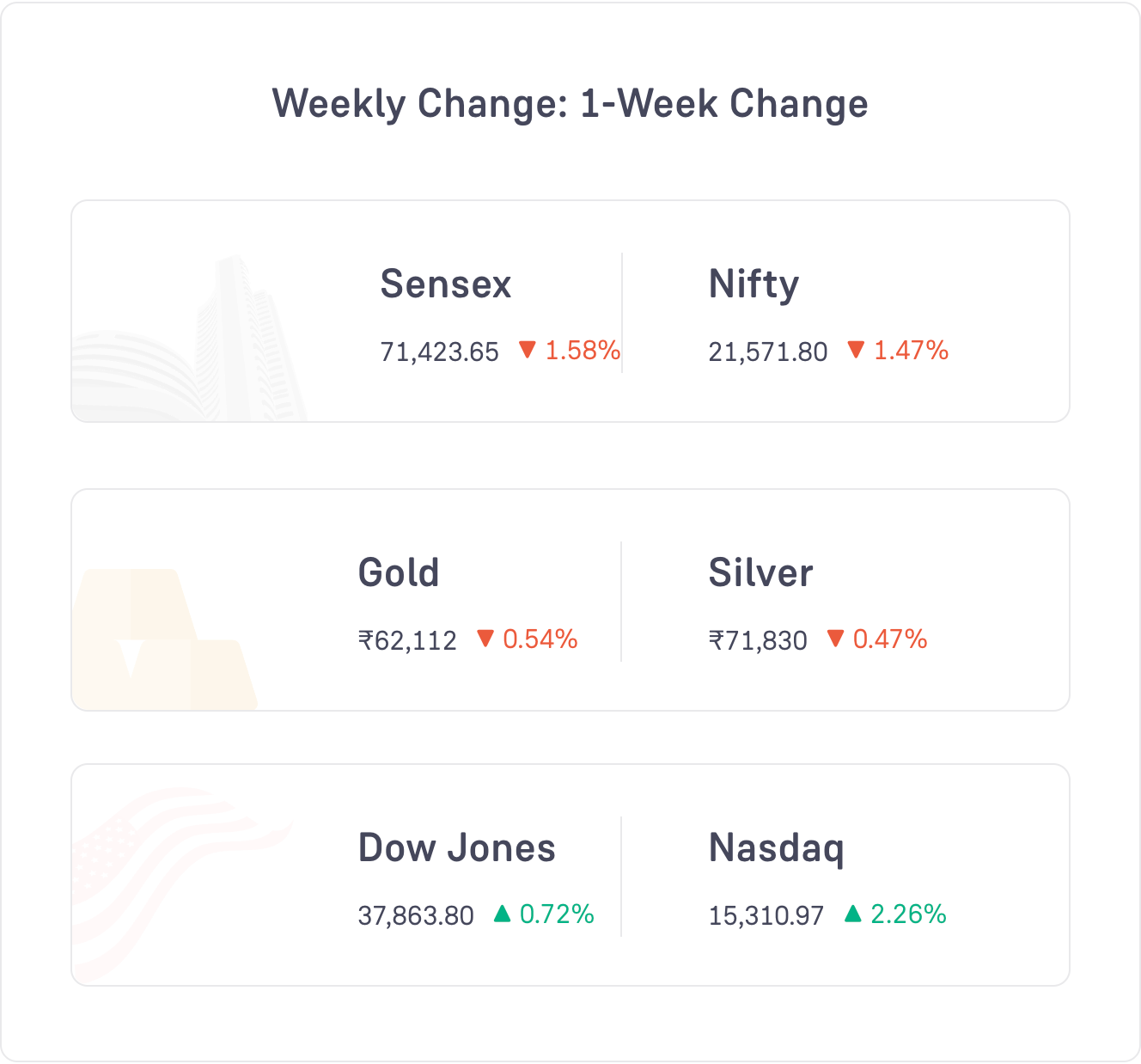Cars were invented in Germany.
But the USA was the biggest market for cars in the world for decades.
How did that happen?
Mass production of cars happened in the USA.
Ford Model T was the first car made on a factory assembly line. Before that, cars were hand-made.
The Ford Model T came out in 1908.
Despite that, cars did not become that popular in America.
Things changed in the 1950s.
During World War 2, factories in the USA were only making items needed in the war.
Everything was rationed. All efforts were going towards the war.
When the war ended, those factories had more free time to produce all sorts of products.
Soldiers were returning from the war.
This period saw America’s economy expand at a break-neck speed.
The World War was over but the fear of war was not gone.
The US decided to spend large amounts of money to expand its highway and road network.
Why? To make connectivity better. To make mobility easier.
But there was another reason behind building the highways.
This was the post-war era. They were afraid of another war.
So that cities could be evacuated – if there ever was a nuclear attack on a city.
The USA spent lavishly and built highways across the entire country.
This had many other effects – planned and unplanned effects.
Suburbs
One effect was the development of suburbs.
In India and many other countries, ‘suburb’ means outside the city.
It means the area that comes between the city and the rural areas.
The suburban houses are cheaper, connectivity is poorer, and facilities are inferior to the city.
In America, thanks to the excellent highways, builders started making large bungalow complexes outside cities – in the suburbs.
Middle-class people could buy large houses and live comfortably.
This wave spread throughout the country.
These suburbs were quite far outside. So to buy groceries, go to offices, visit the doctor, and so on, people had to travel many miles.
The roads were good. Petrol was cheap. Traveling was not a problem.
And that is how cars became essential in the USA.
In India, owning a car is considered a luxury. In the USA, it is hard to live life without a car.
If you live in the suburbs, there is no other option. You have to use a car.
Gradually, more people moved to the suburbs. Today, around 50% of the US population lives in suburban areas.
The idea of a road trip was born in the USA. Families would get in their cars and drive off to far-off places.
The side-effect of this was that railway travel suffered losses. And its network did not expand.
Many people are surprised to learn that the USA’s railways are quite poor compared to other developed countries like France, Germany, Japan, etc.
The US has amazing highways. The country is massive (93 lakh sq km). And its population is relatively low (340 million).
So cars worked well for the USA.
Over the decades, cars have become a part of American culture.
Restaurants that you can eat at while sitting in your car (drive-ins).
Movie halls to watch movies while sitting inside the car.
Getting the car auto-washed while sitting inside it.
All of these are inventions that came out of the American car culture.
Jeans are worn by people across the world today. It came from the USA. McDonald’s, Coca-Cola. Hollywood movies. Music.
American culture is extremely impactful. It has affected most major world cultures – through movies, music, economy, fast food, electronic devices, and (of course) cars.
The world has picked up on American habits and lifestyles.
Somewhere, the dream of car ownership has become a dream for all.
Yes, indeed, car ownership is not an American invention.
But the widespread car ownership seen in the US did influence many countries of the world – including India.
Cars in the US, EU, Japan
Many parts of the world adopted the same car culture.
The cars also changed and adapted to suit local conditions.
Cars in America are huge.
They drive large pickup trucks, SUVs, vans, and sedans.
Americans are not that familiar with the concept of hatchback cars.
On the other hand, let’s consider a developed country that has less space – Japan.
It is famous for something called Kei cars.
Kei cars are small and boxy hatchbacks. They are narrow and small – designed to navigate around the cramped streets of Japanese cities.
Kei cars don’t work too well on highways – they are not aerodynamic. But inside Japanese cities, they work wonders.
Suzuki Wagon-R is a Kei car sold in Japan. Maruti sells a slightly larger version of it in India.
Future in India
The USA’s population is about 340 million.
India’s population is about 1.4 billion – 4 times greater.
Around 43 lakh cars were sold in India in 2022.
Around 1.3 cr cars were sold in the USA in 2022 – second biggest.
Around 2.6 cr cars were sold in China in 2022 – the world’s biggest market for cars.
Over 91% of households own a car in the USA. In India, it is only about 7.5%.
India’s car industry has a long way to go. There are some differences between the USA and India.
India’s population is 4 times more than the USA’s.
At the same time, India’s landmass size is around 3 times less than the USA's.
Which means, we just don’t have enough space as Americans.
We struggle to park our cars in cities, there are long traffic jams already, and highways are still being built.
We are a dense country. We might not see car ownership levels that exist in the USA.
Even in developed countries like the UK, car ownership is lower compared to the US – 77%.
For now, it seems like the future growth of this industry is a given.
But to what extent will it occur? At what point will the sales slow growth down?
This is an interesting space to watch.
The illustrations used above are made using an AI tool (DALL-E).
Quick Takes
+India's forex reserves increased $1.6 bn to $618.94 bn as of Jan 12.
+Tata Group will pay Rs 2,500 cr for the title sponsorship rights of IPL.
+Government-run oil companies spent Rs 89,000 cr on capital expenditure (capex) in the first 9 months of the current financial year – 84% of their combined annual capex target.
+The Ministry of Highway has identified 53 road projects worth Rs 2.1 lakh cr to be awarded on a build-operate-transfer model.
+Akasa Air has placed an order for 150 Boeing 737 MAX narrowbody planes.
+LIC is now the most valuable (by market cap) PSU in the country, overtaking SBI.
+Government has reduced the windfall tax on crude oil from Rs 2,300 per tonne to Rs 1,700 per tonne, effective from 16 Jan.
+Formal job creation by the Employees State Insurance Corporation declined by 7.5% month-on-month in Nov 2023, adding 15.9 lakh new employees compared to 17.2 lakh in Oct 2023.
Theme of the week: risk in investing
Day 6 - Sunday
We’ve reached the end of this week’s course that started on Monday.
Here’s a test you should take. Get pen and paper!
Question 1:
If you are not able to quickly sell your investments and get money, what risk is it?
-Concentration risk
-Liquidity risk
Question 2:
Everything is more expensive by 5% in one year. Next year, the prices shoot up to 9%. What is this?
-Concentration risk
-Inflation risk
-Liquidity risk
Question 3:
You bought a share. When you need to sell the share, its price is lower than your buying price. What is this?
-Equity risk
-Interest risk
-Inflation risk
Question 4:
You bought bonds at 5%. Later, the bond interest rate went up to 6%. What is this?
-Inflation risk
-Interest risk
Question 5:
China and USA are in a heated argument. The exchange rate of the two countries goes suffers because of this. This is an example of:
-Foreign currency risk
-Timeline risk
Answers:
Q1: Liquidity risk
Q2: False, it matters
Q3: Equity risk
Q4: Interest risk
Q5: Foreign currency risk
The information contained in this Groww Digest is purely for knowledge. This Groww Digest does not contain any recommendations or advice.
Team Groww Digest








